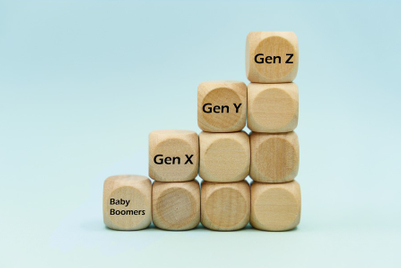
Based on a survey led by Corporate Advisory and Public Affairs practice, Weber Shandwick India recently launched the ‘Elections Matter: India Report.’ It examined election sentiments around news consumption habits, trust in different information sources and voting behaviours and motivations among Gen Z (18-24 years) and millennial (25-44) Indians.
YouGov surveyed 1,000 respondents from the top 10 cities in India, including Mumbai, Delhi-NCR, Chennai, Kolkata, Bangalore, Hyderabad, Pune, Lucknow, Jaipur, and Ahmedabad. The demographics of the survey were balanced with a near-equal split between males (51%) and females (49%) and evenly distributed between Gen Zs and millennials.
Media consumption behaviour highlights the generational differences in these two generations, with a stark contrast in news engagement between millennials and Gen Zs. Over 55% of millennials followed the news, daily compared to about 36% of Gen Z, with males significantly more inclined to current events, news, and politics.
Media consumption patterns and behaviour
When it comes to the source from where the information is gathered, television features among the top three, more for millennials (60%) compared to Gen Zs (44%). Digital consumption continues to grow, with YouTube being the leading platform for consumption of current events, news and politics. It was the dominant information source across all demographics, driven, especially, by Delhi, while TV channels were on top in Chennai and Bangalore, followed closely by Instagram, TV, and WhatsApp.
Nevertheless, the most watched medium does not necessarily make it the most trusted source. As for the trust quotient, Google search, print media, and digital scored higher than most social media platforms.
For Millennials, traditional mediums, like print media, continued to have higher acceptance, with 45% consuming print media for news and politics compared to only 31% of Gen Zs. This same preference pattern was evident even in TV consumption, with southern parts of India, especially Chennai and Bangalore, strongly leaning toward television than the rest of India. Also, 42% of males favoured print versus 33% of women.
The influx of information from multiple sources also raised concerns about misinformation. After fake news websites, social media influencers topped the list for spreading misinformation. And it turns out males were particularly distrustful of them.
Commenting on the consumer survey findings, Rohan Kanchan, MD for consulting and head of public affairs, Weber Shandwick India, said that the report underscores the dynamic nature of news consumption and electoral engagement in today’s digital age. Even as broader generational trends are known, nuances within the cohorts reveal a break from the pattern.
“For instance, the connection of Influencers in consumer motivations vis-a-vis trust in perception might have implications in analysing corporate reputation and development of future strategies. Our national commonalities peppered with our regional disparities, continue to provide an interesting lens to any consumer study such as ‘Elections Matter’,” he added.
Sentiments towards elections and voting
Millennials were significantly motivated by elections and voting due to a strong sense of civic duty and the desire for educational reform. Chennai and Hyderabad had a higher sentiment comparatively towards elections. In contrast, Gen Z showed less enthusiasm, hinting at a potential apathy in political engagement.
There was a shift in priority issues for elections and new government expectations, as well. Civic and social factors, such as infrastructure development, outweighed economic concerns and party manifesto promises as primary voting motivations across gender and generational cohorts.
The state of the economy and education were the most pressing issues, both for the current elections and future government focus, reflecting widespread concerns about socio-economic and educational development. This shift suggested a future-oriented approach to polling, with voters seeking macro-level changes for a better future.
The differences in voting motivations were also region and gender-specific. While voters in Delhi focused on infrastructure development, those in South India, such as Chennai and Bangalore, prioritised voting for candidates who promised to bring about change and impactful leadership.
As for gender-specific concerns and priorities towards elections, economy, education, and public safety were perceived to be among the top priorities for the recent elections, with women particularly interested in women empowerment issues, highlighting the importance of gender-specific policy agendas. Also, over 55% preferred that the new government focus on the economy, education, and healthcare agendas.


.jpg&h=334&w=500&q=100&v=20250320&c=1)
.jpg&h=334&w=500&q=100&v=20250320&c=1)
.jpg&h=334&w=500&q=100&v=20250320&c=1)


.jpg&h=334&w=500&q=100&v=20250320&c=1)








.jpg&h=268&w=401&q=100&v=20250320&c=1)
.jpg&h=268&w=401&q=100&v=20250320&c=1)
.jpg&h=268&w=401&q=100&v=20250320&c=1)
.jpg&h=268&w=401&q=100&v=20250320&c=1)
